The Best Exposures Ratio in Tri-Color Image
Who wants to waste our time? It is true that the longer an exposure time is, the better the image is. However, the shorter the exposure time is, the more we feel comfortable. Many beginners try to take tri-color images, and they are disappointed at the images because the images are more poor than they expected. Many people think that the classical RGB is not suitable to astronomical images, and they go to YMC or LRGB ways.
Generally speaking, our human eyes are very sensitive to green, not blue and red. Here is a good example. A digital camera has a tri-color CCD chip. How does it lay out its color pixels? The most common way is called Bayer type. A half number of pixels is green, a quarter is red, and the rest quarter is also blue. The number ratio among R,G, and B is R:G:B = 1:2:1.
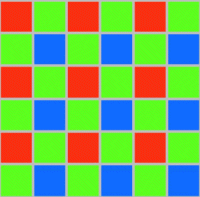 Bayer type array in CCD
Bayer type array in CCD
We have mono-color CCD chips and want to make our time efficient. At first we must know the minimum SNR( Signal-to-Noise Ratio) to make a tri-color image in each color. Here are simulation images which are added random noise increasely in each color.
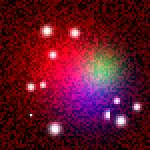
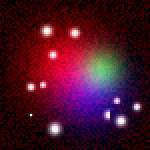
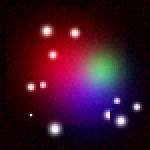
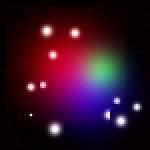 From left SNR = 2,4,8,16 in Red
From left SNR = 2,4,8,16 in Red
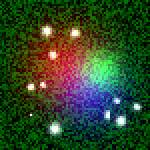
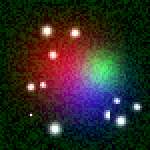
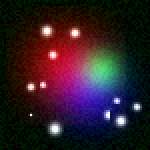
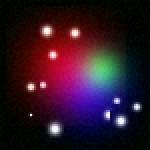 From left SNR = 2,4,8,16 in Green
From left SNR = 2,4,8,16 in Green
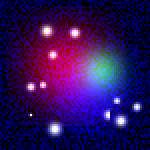
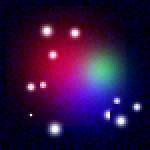
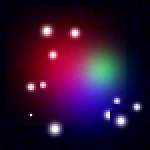
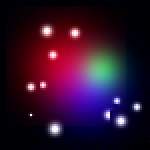 From left SNR = 2,4,8,16 in Blue
From left SNR = 2,4,8,16 in Blue
Using my display, I say that the minimum SNRs are
Red S/N = 8 or 16
Green S/N = 16
Blue S/N = 4 or 8
We understand that blue and red images are less sensitive than green, as I mentioned first. General CCDs do not have high sensitivities in blue , but don't worry about it. We don't need a high SNR in blue.
Here is another combinations of RGB' SNR. The left image is most poor, and the right is best.
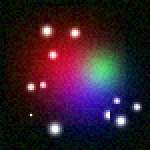
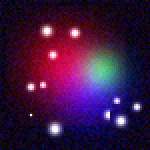
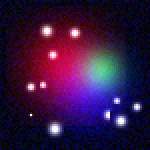
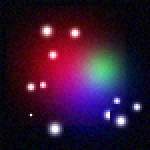
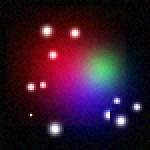 From left SNR(R:G:B)=16,8,16、SNR=8,16,4、SNR=16,16,4、SNR=16,16,8、SNR=16,16,16
From left SNR(R:G:B)=16,8,16、SNR=8,16,4、SNR=16,16,4、SNR=16,16,8、SNR=16,16,16
Take an attention to the left image. It has two SNR=16, but SNR=8 of green makes it worse. Don't neglect green images!! It is very important.
According to the above images, the last minimum SNR is
Red S/N = 16
Green S/N = 16
Blue S/N = 4
We knew the minimum conditions to make a good tri color, and let's determine the exposure time.
In general, SNR is proportional to the sqare root of the exposure time. The longer the time is, the better SNR is. Using tri-color filters, the response ratio is approximately R:G:B = 4:2:1. This raio depends on your chip and filters. My KAF401E with normal RGB filters has R:G:B=4:2:1 approximately
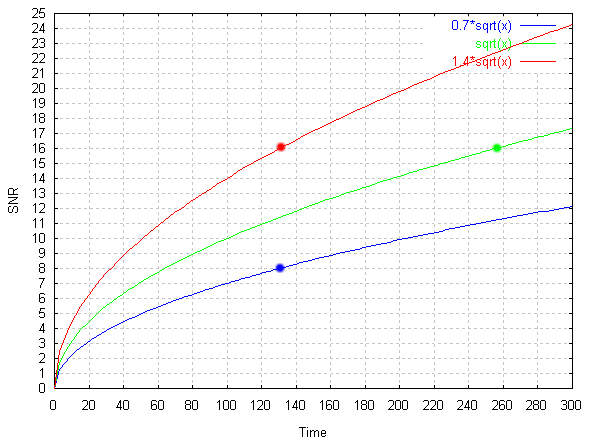 SNR vs Exposure time
SNR vs Exposure time
Reading the above diagram, we take the exposure times, which are approximately.
Red Exp. = 1 (130)
Green Exp. = 2 (260)
Blue Exp. = 1 (130)
We got the best exposure time ratio, and let's compare it with classical exposure ratios by taking an actual nebula.
I select the four ratios, the best ratio, the equal ratio, CCD response ratio, and nebula ratio like below list
A: R:G:B =1:4:1 (Best ratio)
B: R:G:B = 2:2:2 (Equal ratio)
C: R:G:B = 1:2:3. (Response ratio)
D: R:G:B = 2:1:3 (Nubula ratio)
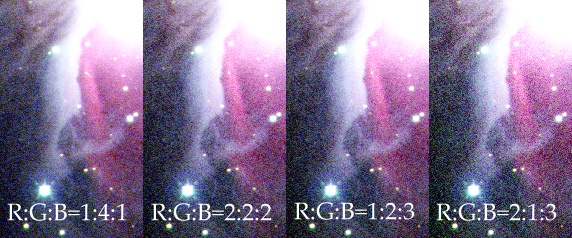
From left A, B, and C ratio image
To take a fair, the color images are composited with 6 color images, each exposure was 1 min.
It is very evident that the best exposure ratio, according to the minimum SNR, makes the best image. There shoule be nothing doubt. However, any people think why we have to take a long exposure time in green even though nubulae don't emit green light. The answer is that the green noise makes tri-color images noisy efficiently.
If you take this best ratio in your tri-color images, you can save your time twice more. Just try it ! You will be amazed at your images and this story.
There are a lot of good examples in my gallery. Just visit on there, comfirm it.
Gallery
1999,5,25 in Japanese
2000,10,17 in English
TOP
mail




















